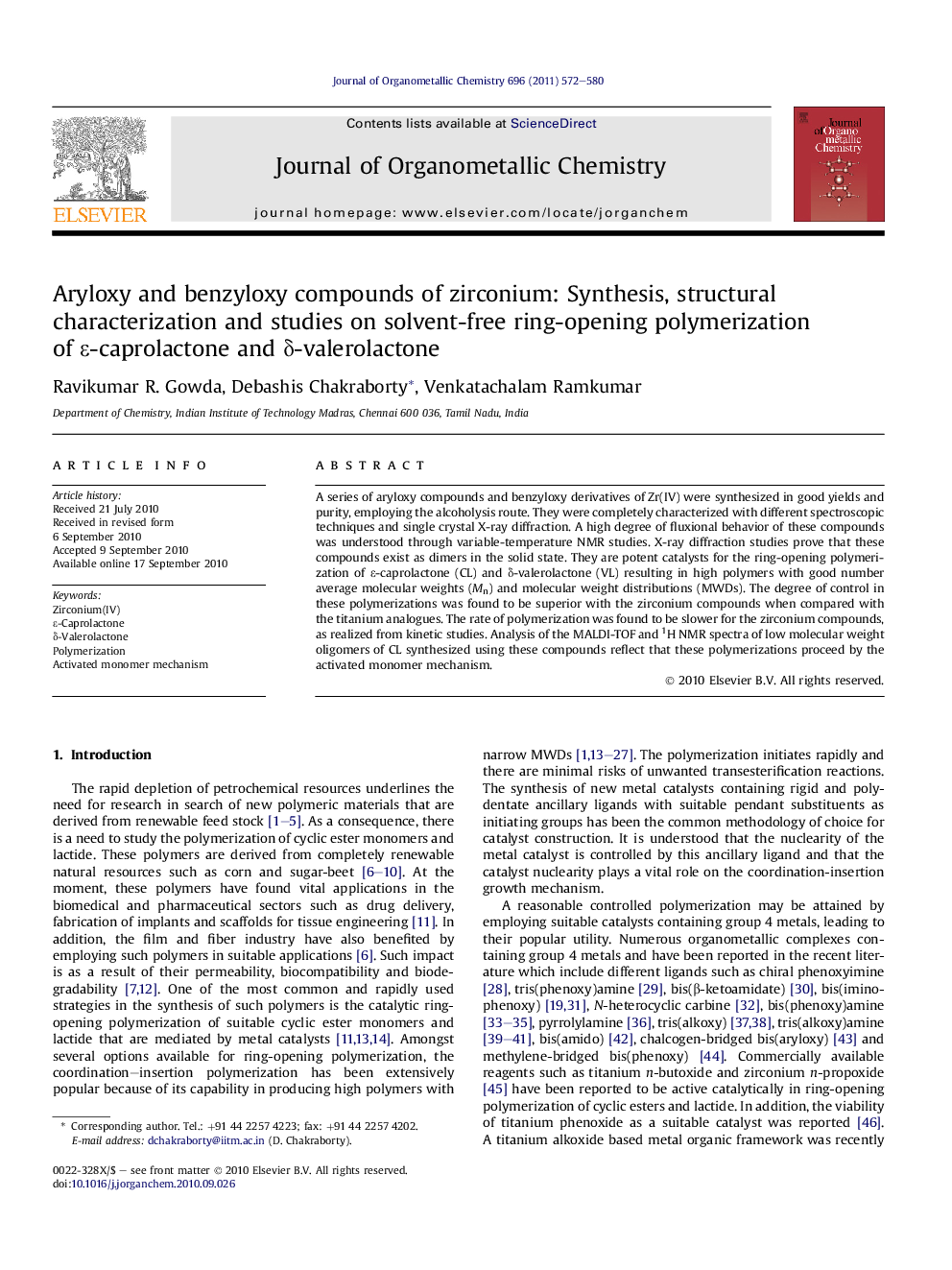| Article ID | Journal | Published Year | Pages | File Type |
|---|---|---|---|---|
| 1322583 | Journal of Organometallic Chemistry | 2011 | 9 Pages |
A series of aryloxy compounds and benzyloxy derivatives of Zr(IV) were synthesized in good yields and purity, employing the alcoholysis route. They were completely characterized with different spectroscopic techniques and single crystal X-ray diffraction. A high degree of fluxional behavior of these compounds was understood through variable-temperature NMR studies. X-ray diffraction studies prove that these compounds exist as dimers in the solid state. They are potent catalysts for the ring-opening polymerization of ɛ-caprolactone (CL) and δ-valerolactone (VL) resulting in high polymers with good number average molecular weights (Mn) and molecular weight distributions (MWDs). The degree of control in these polymerizations was found to be superior with the zirconium compounds when compared with the titanium analogues. The rate of polymerization was found to be slower for the zirconium compounds, as realized from kinetic studies. Analysis of the MALDI-TOF and 1H NMR spectra of low molecular weight oligomers of CL synthesized using these compounds reflect that these polymerizations proceed by the activated monomer mechanism.
Graphical abstractThe synthesis of a variety of aryloxy compounds and benzyloxy derivatives of Zr(IV) is reported. Their utility in the polymerization of ɛ-caprolactone and δ-valerolactone is described.Figure optionsDownload full-size imageDownload as PowerPoint slideResearch highlights► Synthesis of a wide variety of aryloxy compounds having fluxional behavior. ► Active initiators for the polymerization of ɛ-caprolactone and δ-valerolactone. ► The polymerization pathway follows the activated monomer mechanism. ► Elaborate ligands not a practical necessity for the polymerization of cyclic esters.
